Maramagambo forest is found in the district of Bushenyi in Uganda. It is part of Queen Elizabeth National Park and one of the largest forests in East Africa. The forest starts from an escapement in Kichwamba all the way to Lake Edward. The name “Maramagambo” originates from a story about a group of young people who got lost in the forest for several days. By the time they found their way back to the village, they had grown so worn out and traumatized that that they couldn’t speak for long.
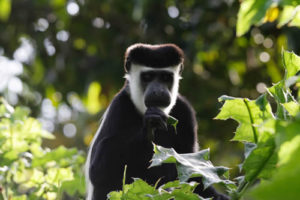 Maramagambo therefore refers to someone who is speechless or more specifically “can’t speak”. Maramagambo forest is home to chimpanzees, elephants, bush pigs, pythons, bats and the rare Bates’s pygmy antelope. The forest brings rains to surrounding human communities while it’s rivers provide water domestic water. The locals living near the forest also get firewood, fruits, traditional medicine, timber and poles for constructing their huts. Apart from, Maramagambo, Uganda is blessed with other forests in Mabira, Budongo, Bwindi, Kibale and Busitema to mention but a few.
Maramagambo therefore refers to someone who is speechless or more specifically “can’t speak”. Maramagambo forest is home to chimpanzees, elephants, bush pigs, pythons, bats and the rare Bates’s pygmy antelope. The forest brings rains to surrounding human communities while it’s rivers provide water domestic water. The locals living near the forest also get firewood, fruits, traditional medicine, timber and poles for constructing their huts. Apart from, Maramagambo, Uganda is blessed with other forests in Mabira, Budongo, Bwindi, Kibale and Busitema to mention but a few.
In 2008, the forest was in the news all around the world because of a tourist from the Netherlands who was thought to have acquired the Marburg virus from one of the bat caves in the forest. Although this was an isolated case which has never happened again the last 10 years, it created negative publicity which unfortunately may still be keeping a few visitors away from this magnificent forest.
There are millions of bats in the area and in other parts of Uganda. If they really carried the virus, Uganda would be fighting a devastating epidemic. The point I am trying to make is that the forest is very safe to visit and no one should let stories about a Marburg Virus prevent them from visiting.
Activities and Things to do in Maramagambo Forest
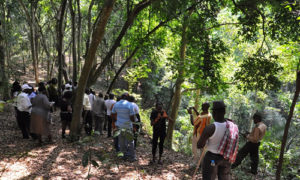 Despite being blessed with great biodiversity, Maramagambo forest is one of the less visited attractions in Queen Elizabeth National Park. Many prefer visiting the Kyambura gorge which is closer to the park offices for chimpanzee tracking and nature walks. Visiting Maramagambo forest is an excellent choice for those who wish to visit the forest with less crowds. In time, we hope that the authorities can find a way of habituating the chimpanzees in Maramagambo and open doors for more visitors. Let’s look at some of the things to do in Maramagambo forest.
Despite being blessed with great biodiversity, Maramagambo forest is one of the less visited attractions in Queen Elizabeth National Park. Many prefer visiting the Kyambura gorge which is closer to the park offices for chimpanzee tracking and nature walks. Visiting Maramagambo forest is an excellent choice for those who wish to visit the forest with less crowds. In time, we hope that the authorities can find a way of habituating the chimpanzees in Maramagambo and open doors for more visitors. Let’s look at some of the things to do in Maramagambo forest.
Nature Walks: Maramagambo forest is arguably one of the best places for nature walks in Uganda. Nature walks can be done for 2 to 6 hours. The half day nature walks provide opportunities to go deeper into the forest and even explore beautiful crater lakes. Nature walks in Maramagambo forest can be done 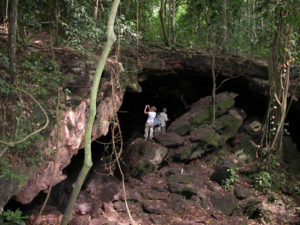 using several trails including the forest trail, river trail, palm trail, valley trail and waterfall trail. The forest trail is suitable for those who are not fit enough to climb hills because it is done in relatively flat terrain. The river tail goes up to River Kajojo while the Palm trail is famous for the frame trees whose leaves are said to increase female libido. The waterfall trail takes you to the beautiful Kilyantama waterfalls.
using several trails including the forest trail, river trail, palm trail, valley trail and waterfall trail. The forest trail is suitable for those who are not fit enough to climb hills because it is done in relatively flat terrain. The river tail goes up to River Kajojo while the Palm trail is famous for the frame trees whose leaves are said to increase female libido. The waterfall trail takes you to the beautiful Kilyantama waterfalls.
Regardless of which trail you use, expect to pass through verdant forest with remarkable biodiversity. Watch out for soldier ants along crossing along the trails. These ants match in large columns that can stretch for 100 meters. By the time you notice them, a few would have already found their way into your clothes. Their bite is painful but not poisonous. To avoid these ants, dress up in long-sleeved trousers and shirts. The nature walks should be completed with a visit to the two crater lakes bordering the forest – Kyasanduka and Nyamasingiri. You can spend time marveling at the scenery around the lakes or go for Kayaking/canoeing.
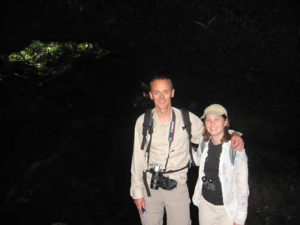 Primates Viewing: Maramagambo forest is home to Ververt monkeys, Colobus Monkeys, L’Hoest’s Monkeys, Blue Monkeys, Baboons, Red Tailed Monkeys and Chimpanzees. Nocturnal primates like Bush babies and Pottos can also be sighed during night walks. The chimpanzees in Maramagambo forest are not open to tourism because they are not habituated. I guess the large size of the forest would make chimpanzee tracking impractical on a daily basis. Chimps are very mobile and cannot stay in one area for too long. It would imply following them into this vast forest with little chance of success. However, visitors spot the chimps frequently during the nature walks.
Primates Viewing: Maramagambo forest is home to Ververt monkeys, Colobus Monkeys, L’Hoest’s Monkeys, Blue Monkeys, Baboons, Red Tailed Monkeys and Chimpanzees. Nocturnal primates like Bush babies and Pottos can also be sighed during night walks. The chimpanzees in Maramagambo forest are not open to tourism because they are not habituated. I guess the large size of the forest would make chimpanzee tracking impractical on a daily basis. Chimps are very mobile and cannot stay in one area for too long. It would imply following them into this vast forest with little chance of success. However, visitors spot the chimps frequently during the nature walks.
Birdwatching: The sheer density and variety of birds found in Maramagambo forest is what makes Uganda one of the top birding destinations in the world. The key attractions in Maramagambo forest are the Rwenzori Turaco, Forest Flycatchers and White Naped Pigeons. Other species include the African green pigeon, bat hawk, black-headed batis, dark-caped yellow warbler, fawn-breasted wax-bill, red-tailed bristle bill, Ross’s turaco, sulphur-breasted bush shrike and white-naped pigeons,
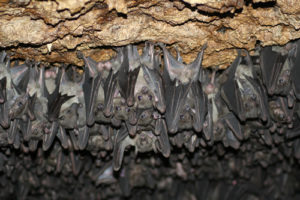 Visiting Bat Caves: There are several caves within the Maramagambo forest that are home to millions of bats. The negative media coverage resulting from the 2008 Marburg Virus issue forced the park to work with the American Center for disease control to build a safe viewing platform. From the viewing point, visitors can actually spot African rock pythons feeding on the bats. Going too close to the bat caves is prohibited and still considered unsafe for tourists for fear that one could catch the Marburg virus.
Visiting Bat Caves: There are several caves within the Maramagambo forest that are home to millions of bats. The negative media coverage resulting from the 2008 Marburg Virus issue forced the park to work with the American Center for disease control to build a safe viewing platform. From the viewing point, visitors can actually spot African rock pythons feeding on the bats. Going too close to the bat caves is prohibited and still considered unsafe for tourists for fear that one could catch the Marburg virus.
Cultural Encounters: Apart from the bat caves and the viewing platform, visitors to Maramagambo forest can also visit a historic cave close to the community of Nyanziibiri for a cultural encounter. The cave is visited by prominent people who believe that they will be protected from misfortunes and other 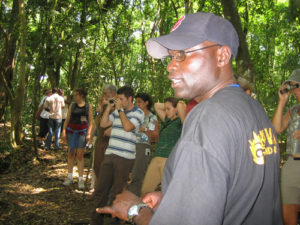 calamities of life. The cave and its secret location was used as a perfect hideout by fugitives running away from the dictatorial regimes of the 1970’s and 80’s in Uganda. Close to the cave is the Banyaruguru hut with its beautiful artifacts depicting the kind of life lived by the community’s ancestors.
calamities of life. The cave and its secret location was used as a perfect hideout by fugitives running away from the dictatorial regimes of the 1970’s and 80’s in Uganda. Close to the cave is the Banyaruguru hut with its beautiful artifacts depicting the kind of life lived by the community’s ancestors.
Forest research and Conservation: After completing the nature walks and other forest activities one can go to the visitor information Centre and learn about what is being done to protect the forest. The park officials should be able to share information about their work and the current research efforts in the forest.
Wildlife Encounters in Queen Elizabeth National Park: As already noted earlier, Maramagambo forest is part of Queen Elizabeth National Park. This means that after seeing enough of what the forest 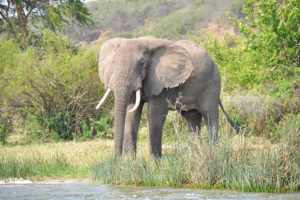 has to offer, visitors can go for a game drives at the Kasenyi and Ishaha sectors of Queen Elizabeth National park to spot tree climbing lions, buffaloes, hyenas, warthogs, elephants and many more of Africa’s famous mammals. A boat cruise along the Kazinga Channel is one of the best wildlife experiences you can ever have while visiting the African continent. Moreover, if you haven’t seen the chimps in Maramagambo, you can go for the more organized chimpanzee tracking at the Kyambura Gorge. Queen Elizabeth National Park has so much to offer. No wonder it is the most visited national park in Uganda. Check out our 2 Days Queen Elizabeth tour itinerary.
has to offer, visitors can go for a game drives at the Kasenyi and Ishaha sectors of Queen Elizabeth National park to spot tree climbing lions, buffaloes, hyenas, warthogs, elephants and many more of Africa’s famous mammals. A boat cruise along the Kazinga Channel is one of the best wildlife experiences you can ever have while visiting the African continent. Moreover, if you haven’t seen the chimps in Maramagambo, you can go for the more organized chimpanzee tracking at the Kyambura Gorge. Queen Elizabeth National Park has so much to offer. No wonder it is the most visited national park in Uganda. Check out our 2 Days Queen Elizabeth tour itinerary.
The best time to visit Maramagambo forest
Maramagambo forest is open to visitors all through the year. Spotting chimpanzees and other primates is ideal during the months between June and September and also between December and February. The other months fall in the rainy season which can make the forest trails muddy/slippery and difficult to pass through.
However, these rainy months are ideal for those who are interested in birding. It’s the breeding season and the forest is full of beautiful sounds of both resident and migratory birds. At this time of the year, the forests are filled with fresh fruits and food for the birds and other forest creatures. Visitors are few in the forest hence you can have all the privacy to explore the forest that is not possible when there are crowds.
How to get to Maramagambo forest
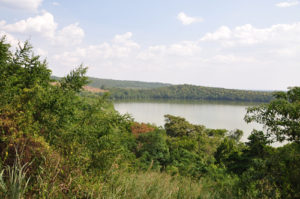 It takes about 6 hours of driving to reach Maramagambo forest from Kampala. Most visitors to Maramagambo forest make their travel arrangements using a Tour operator. By using a Tour Operator, they come to Uganda without the burden of figuring out the way to the forest or dealing with a new system of doing things. Tour operators can arrange for the transportation, accommodation and all permits required for your activities. Tour operators will assign a Guide who is knowledgeable about the area and is known to park authorities.
It takes about 6 hours of driving to reach Maramagambo forest from Kampala. Most visitors to Maramagambo forest make their travel arrangements using a Tour operator. By using a Tour Operator, they come to Uganda without the burden of figuring out the way to the forest or dealing with a new system of doing things. Tour operators can arrange for the transportation, accommodation and all permits required for your activities. Tour operators will assign a Guide who is knowledgeable about the area and is known to park authorities.
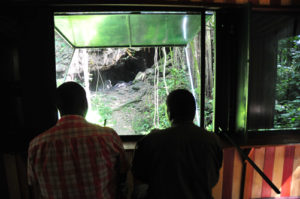 Those who wish to travel on their own have two choices – hire a personal car or use public transport. Buses can be got at the main park heading to Bushenyi. The main us park is located close to Nakivubo stadium. Once at the bus park, look for buses plying the Mbarara – Bushenyi route. If these are not around, you can also board the ones heading to Bushenyi via Fort Portal and Kasese.
Those who wish to travel on their own have two choices – hire a personal car or use public transport. Buses can be got at the main park heading to Bushenyi. The main us park is located close to Nakivubo stadium. Once at the bus park, look for buses plying the Mbarara – Bushenyi route. If these are not around, you can also board the ones heading to Bushenyi via Fort Portal and Kasese.
Visitors who are already at the park can start their journey from the park gate in Mweya all the way up to the forest which is 22 kilometers away. Those who may find the road journey long and tiresome can book a chartered flight from Entebbe International Airport or Kajjansi airstrip in Kampala to Mweya Airstrip in Queen Elizabeth National Park.

